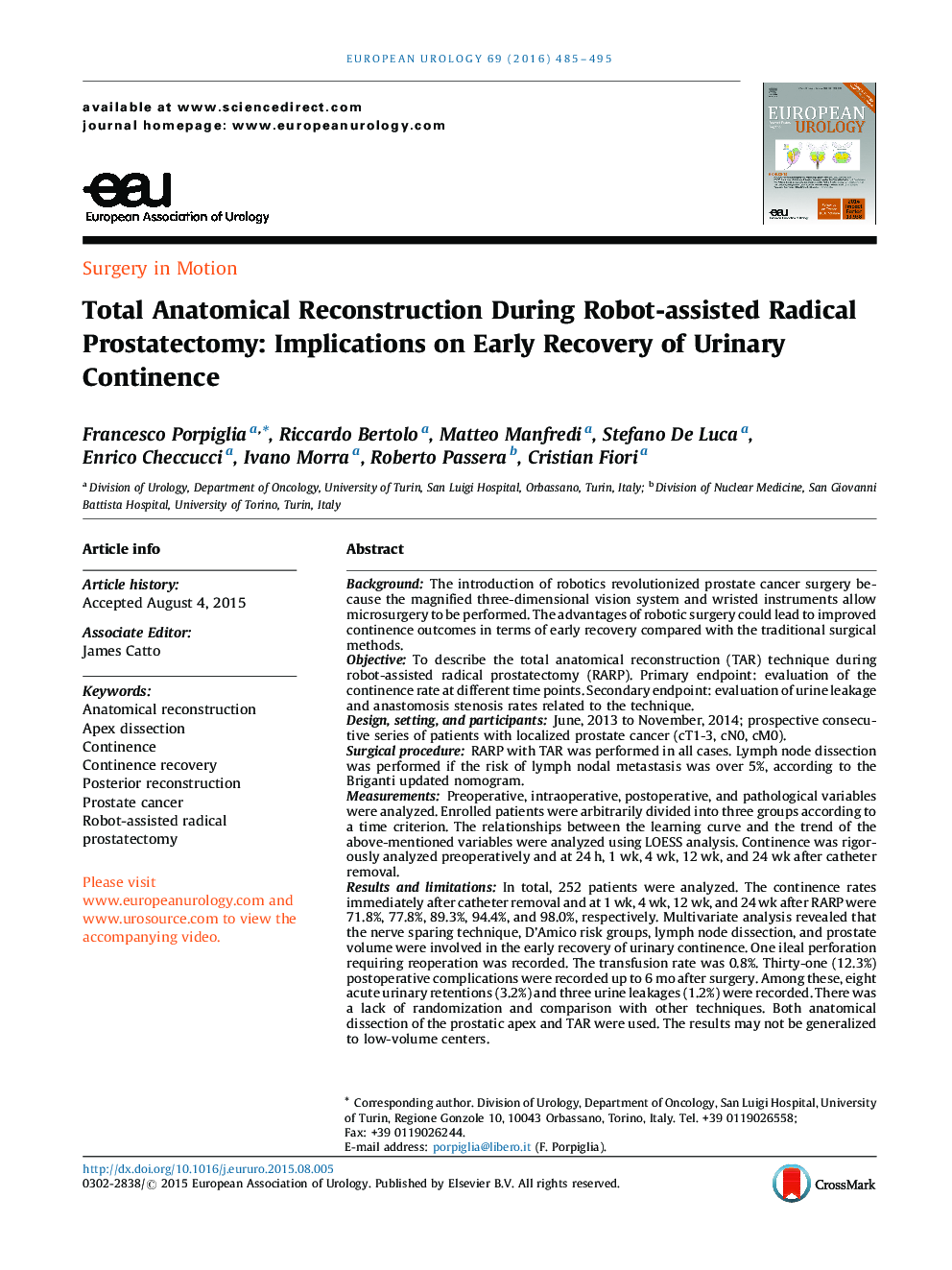| کد مقاله | کد نشریه | سال انتشار | مقاله انگلیسی | نسخه تمام متن |
|---|---|---|---|---|
| 6176363 | 1253048 | 2016 | 11 صفحه PDF | دانلود رایگان |
BackgroundThe introduction of robotics revolutionized prostate cancer surgery because the magnified three-dimensional vision system and wristed instruments allow microsurgery to be performed. The advantages of robotic surgery could lead to improved continence outcomes in terms of early recovery compared with the traditional surgical methods.ObjectiveTo describe the total anatomical reconstruction (TAR) technique during robot-assisted radical prostatectomy (RARP). Primary endpoint: evaluation of the continence rate at different time points. Secondary endpoint: evaluation of urine leakage and anastomosis stenosis rates related to the technique.Design, setting, and participantsJune, 2013 to November, 2014; prospective consecutive series of patients with localized prostate cancer (cT1-3, cN0, cM0).Surgical procedureRARP with TAR was performed in all cases. Lymph node dissection was performed if the risk of lymph nodal metastasis was over 5%, according to the Briganti updated nomogram.MeasurementsPreoperative, intraoperative, postoperative, and pathological variables were analyzed. Enrolled patients were arbitrarily divided into three groups according to a time criterion. The relationships between the learning curve and the trend of the above-mentioned variables were analyzed using LOESS analysis. Continence was rigorously analyzed preoperatively and at 24Â h, 1 wk, 4 wk, 12 wk, and 24 wk after catheter removal.Results and limitationsIn total, 252 patients were analyzed. The continence rates immediately after catheter removal and at 1 wk, 4 wk, 12 wk, and 24 wk after RARP were 71.8%, 77.8%, 89.3%, 94.4%, and 98.0%, respectively. Multivariate analysis revealed that the nerve sparing technique, D'Amico risk groups, lymph node dissection, and prostate volume were involved in the early recovery of urinary continence. One ileal perforation requiring reoperation was recorded. The transfusion rate was 0.8%. Thirty-one (12.3%) postoperative complications were recorded up to 6 mo after surgery. Among these, eight acute urinary retentions (3.2%) and three urine leakages (1.2%) were recorded. There was a lack of randomization and comparison with other techniques. Both anatomical dissection of the prostatic apex and TAR were used. The results may not be generalized to low-volume centers.ConclusionsThe TAR technique showed promising results in the early recovery of urinary continence, as well as watertight anastomosis and a low rate of urine leakage. The oncologic results were not affected. Comparative studies are needed to support the quality of reported results.Patient summaryOn the basis of our findings, it seems that the risk of urinary incontinence following radical prostatectomy can be lowered via meticulous anatomical reconstruction using a robotic system. Comparative studies are required to support the reported results.
Journal: European Urology - Volume 69, Issue 3, March 2016, Pages 485-495
